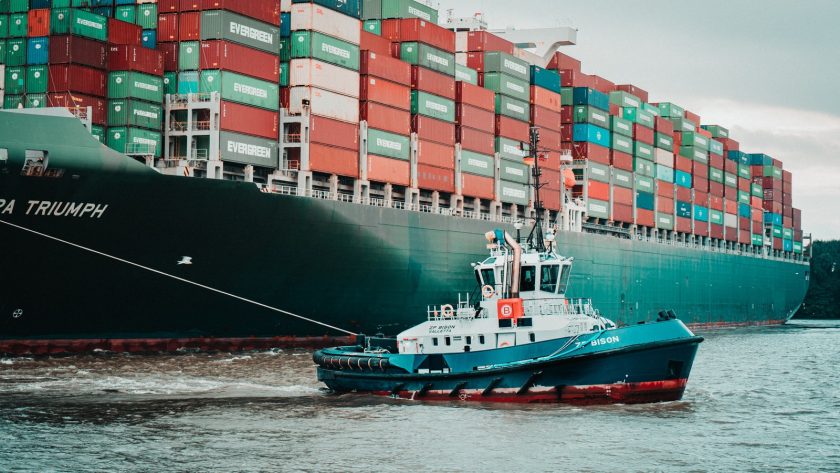While the coronavirus pandemic has presented many challenges to brick-and-mortar and online retailers, managing the impending extended holiday returns season and its potential excessiveness will be a challenge that lasts well beyond the virus’s temporary chaos will be challenging. The reverse logistics sector could have a chance to be prioritized by the retail sector, which is often neglected and can prove very costly.
Holiday Returns to Surge
Online shopping has risen throughout the pandemic. However, it was especially high during the holiday season due to supply chain woes that caused stock shortages and increased demand online. Fear of not receiving their gifts on time, many consumers likely overpurchased this holiday season. According to Reuters, retailers also incentivized shoppers with Christmas promotions that were launched as early as September and extended returns policies of up to 60 or 90 days for holiday purchases. According to Mastercard, the results for the United States show an overall increase in retail sales of 8.5 percent over the traditional holiday period from November 1 through December 24. E-commerce sales increased 11 percent. The top category was apparel.
Despite the positive sales outlook, retailers will be hit hard by the rush to buy products that have not been tested and are unopened until they reach their doorstep. Due to the increased shipping costs and shortages in key areas like trucking and warehouse, this year’s returns will be 59 percent more costly than last year. Optoro, a reverse logistics company that helps manage and resell merchandise returned, has calculated this metric. It also projects that 120 billion dollars worth of goods will be returned between Thanksgiving and January. Although the backlogs in transportation are expected to be temporary for another year, poor returns management by retailers will have a long-term impact on profitability.
How Fashion Retailers Are Affected by Mismanaged Returns
Pointing to understaffed stores and messy dressing rooms driving consumers to shop from the comfort of home well before the pandemic, reporting by The Atlantic estimates that one-third to one-half of all clothing bought in the US this past year was done so online. E-commerce has a higher return rate than brick-and-mortar, but clothing is more so because of “bracketing,” which involves ordering multiple sizes at once to avoid fit problems. The chances of reselling those items at their original retail price, or at all, are low if the items have been worn more than once or if they aren’t returned in perfect condition.
By the time a dress makes its way back to a warehouse and is checked against the receipt to make sure it is the correct item, determined to be clean and sellable, and maybe re-polybagged, it could already face markdowns – especially if it is a seasonal item. The store may lose a full-priced sale, but it could also be out of pocket for transportation costs to and from customers. Offering free shipping is almost an expectation of online business. It might be possible to divert the dress to an off-price retailer if it came from a luxury brand. However, if the dress is from a fast fashion brand, it’s likely it will end up in a landfill. Shipping all these orders back and forward, as well as wasting resources to make items that are not sold or used, has a negative impact on the environment. This goes against consumer concerns that brands should be more sustainable. There is also a need to improve the efficiency of managing returns.
There are ways to address the problem of return management neglect
McKinsey published a comprehensive report that predicted that the growth of omnichannel shopping will cause unsustainable financial consequences for many apparel companies. Their research shows that customers view managing returns as an essential part of their shopping experience. However, only a third believe it is important to manage returns efficiently. The fragmented way in which returns are collected, the unpredictable timing and volume, the variety of reasons for returns by product category and the additional costs associated with investing in technology and personnel to maximize the profitability of returns are some of the key challenges. McKinsey recognizes the complexity of these problems, but they offer methods to improve.
Fashion companies report that 70% of all returns are due to poor fit. Hence, it is important to expand advanced shopping tools to show fit and decrease returns. One example is offering on-model product videos, where customers can see the movement and shape of a style on a range of body shapes and skin tones. You can also get assistance from stylists via live chat or by listing customer reviews that are specific to the size of the product pages. Augmented reality tools still in their infancy, but Gap Inc. acquired Drapr last year, an ecommerce startup that allows customers to create 3D avatars of themselves to try on clothes.
Design and development teams can make changes to future styles by collecting more detailed data from customers regarding reasons for returning items. Mckinsey gives an example of a sweater that has been returned due to pilling. This can be used as a basis for determining the fiber or fabric choice going forward.
If possible, encourage customers to return items in-store to save up to 2 weeks processing time. This increases the likelihood that the item will be resold at its full price.
The ability to return Amazon orders at Whole Foods by partnering with third-party drop off locations can streamline the flow and timing of returns. Narvar, a return logistics company, partnered with United Parcel Service (UPS) to enable boxless returns at UPS Stores. The customer receives a QR code that can be used at UPS dropoff locations. UPS will accept the item box-free and unlabeled and use a recyclable polybag instead to ship the item back to the merchant via the nearest distribution center. This saves shipping costs and time for the customer as well as reducing packaging waste.
McKinsey suggests that one person be appointed to oversee returns and streamline the often disjointed, cross-functional process from end-to-end.





